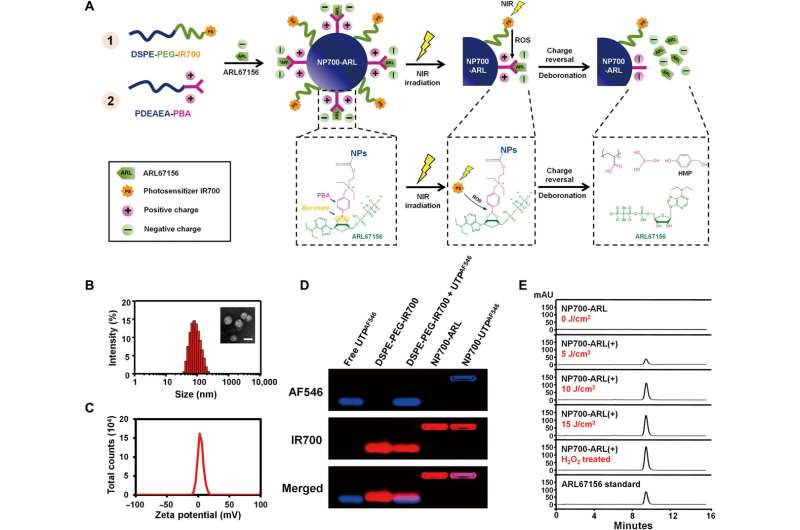Scientists create nanoparticle that helps fight solid tumors

Researchers from Wake Forest University School of Medicine have discovered a possible new approach in treating solid tumors through the creation of a novel nanoparticle. Solid tumors are found in cancers such as breast, head and neck, and colon cancer.
In the study, Xin Ming, Ph.D., associate professor of cancer biology at Wake Forest University School of Medicine, and his team used a nanoparticle to deliver a small molecule called ARL67156 to promote an anti-tumor immune response in mouse models of colon, head and neck, and metastatic breast cancer, resulting in increased survival.
The study is published online in the journal Science Translational Medicine.
Immunotherapy has transformed cancer treatment, but unfortunately, only about 20% of patients respond to treatment.
"Most solid tumors have a poor microenvironment that can make them unresponsive to conventional cancer therapeutics, including immunotherapy," Ming said. "But this study demonstrates that nanoparticle therapeutics are promising."
According to Ming, the levels of adenosine triphosphate (ATP), an energy-carrying molecule, are high in tumors treated with anti-cancer therapies and quickly degraded into adenosine by a series of enzymes that are highly expressed in the tumors. The presence of adenosine in the tumor microenvironments can contribute to a poor therapeutic response. The compounds like ARL67156 are unable to enter solid tumors alone because of their poor physicochemical properties. However, the nanoparticle's design does allow the accumulation and release of ARL67156 selectively in solid tumors.
In the study, scientists used the nanoparticle as a vehicle to deliver ARL67156, an enzyme inhibitor that prevents ATP degradation into adenosine. The nanoparticle was tested in several mouse tumor models.
"We found that the nanomedicine substantially suppressed tumor growth and resulted in prolonged survival," Ming said.
Next, researchers tested how the nanoparticle worked in combination with an anti-PD-1 antibody, a common immunotherapy. Researchers noted that the treatment worked well and synergistically with anti-PD-1 therapy.
Finally, scientists evaluated the nanomedicine in a three-dimensional in-vitro model of tumors from patients with colon or breast cancers. Similar effects were observed—enhanced tumor cell death through anti-cancer immune response.
"Our study suggests there's potential translation of our nanoparticle therapeutic for treating human cancers and that it might also boost the effectiveness of existing treatments," Ming said. "These findings warrant further evaluation."
More information: Chengqiong Mao et al, Delivery of an ectonucleotidase inhibitor with ROS-responsive nanoparticles overcomes adenosine-mediated cancer immunosuppression, Science Translational Medicine (2022). DOI: 10.1126/scitranslmed.abh1261



















